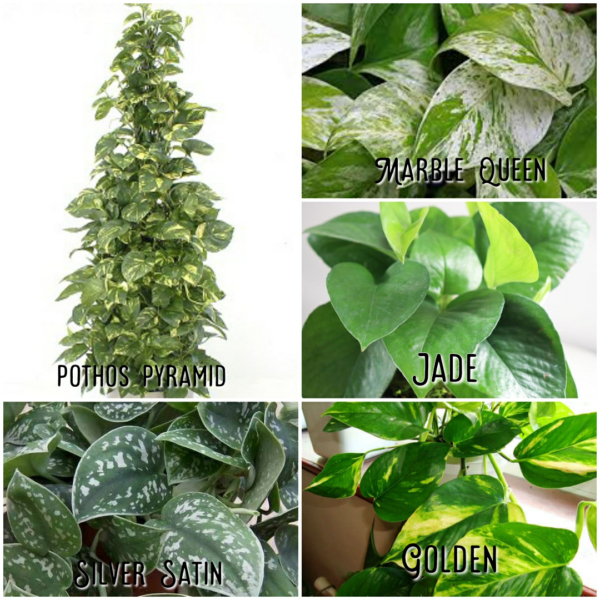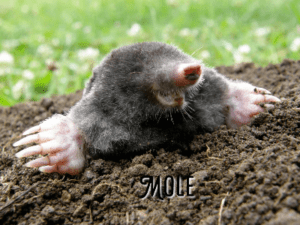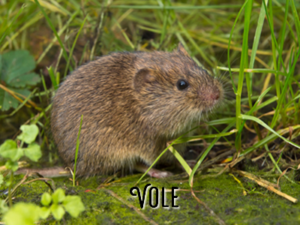What’s Budding

What’s Budding

Education or Experience?
Every business owner in a service profession hires employees they hope will learn and grow in their position. Though I know there are landscapers and plantscapers who use a subcontractor model, that model is risky and requires constant attention to be sure each person or crew is properly insured for everyone’s protection. By law, if a person or crew is under management control as to duties, processes, and schedule, they must be treated and insured as employees rather than contractors.
We choose to hire, train and support staff as part of our ongoing team. We make an investment in each person’s development, and that person invests in their own progress and ours by committing to our quality standards, record-keeping and ongoing communication.
Who are we hiring? We look for both education and experience. When a person has identified horticulture as a career field, they usually seek and pursue further knowledge, often in the form of seminars or trade classes. Many of our staff have an associate’s or bachelor’s degrees. It is a pleasure to interview a person who loves working with plants and has made a commitment to learn and grow in their knowledge and skills. We also look for experience, seeking individuals who have been working in our field or a related one, and already knows that they enjoy the work.
Both education and experience are important. The factor that can seal the deal or negate positives in both areas is attitude.
We seek an inquisitive person with a strong work ethic, who understands the benefits of working in teams, and appreciates the opportunity to be heard, as well as to keep learning. Though we sometimes hear from experienced landscape or mowing crew members looking for a new position, often the fit is not right for either party.
We typically interview and give a tour of our facilities, then carefully check references and databases before offering a position. Our interiorscape maintenance prospects experience a short working interview. This allows them to carry and use the tools, and work alongside an experienced technician in one or two of our accounts. This allows them to experience the pacing, client interaction and actual duties, so they can consider if they would enjoy and be able to commit to our service expectations.
Our goal is always to make a long-term hire and select a person who will enjoy the variety, structure, and pace of work. We have both full and part-time staff, and our employees range from their twenties to seventies. If you know a plant person who is looking for a new opportunity, we would be pleased to learn more about them.

On the Green Side

What Plant Will be a Good, East Care Choice for This Location?
This is the big question people ask when they are new to using plants indoors, or considering sending a gift. Sometimes they literally ask us what the hardest plant is to kill!
So much of the answer is based on available light. Many species we love require some direct natural light, or require medium to high levels of light. One plant type with broad adaptability is the Pothos. Pothos or Epipremnum aureum is a vining plant. Native to the Society Islands of French Polynesia, it has been in common use for generations. Often it can be used as a hanging basket indoors, but 4” and 6” sizes can be used in green walls, as table top plants or as ground cover in atrium beds. This versatile and sturdy species may also be trained to grow up bark slabs, fiber totems or even tripods of stakes, creating plants of 4’ or 6’ heights for narrow locations.
Adaptable from low light up to moderately high light, varieties like, Jade, Marble Queen, Golden and Silver Satin enable coordination with any décor. Because it grows quickly and easily roots in water, it is a favorite to prune and create an additional plant to use or share with friends. When vines get long and bare, simply prune a few at a time back to the rim of the pot in spring, add some fresh soil or fertilizer, and the plant will renew itself in a few weeks.
Digging In


Moles and Voles
These small critters often wreak havoc on beautiful lawns with their tunnels, hills, and trails. Despite being similar in appearance, they are quite different in the damage they cause to our gardens and lawns.
Moles vary in size from four to eight inches and are very well-adapted to subterranean life. They are rarely seen above ground. Moles have cylindrical bodies, velvety fur, and very small, inconspicuous ears and eyes. They are virtually blind but can detect dark and light. Large paddle-like front feet with large, strong claws are designed for digging. For the most part, moles are solitary animals.
Moles are insectivores, eating earthworms, grubs, insects, and larvae. These small mammals consume up to 100% of their body weight daily, using movement and scent sensors on the tip of their noses to find their prey. Moles actively feed day and night, all year long.
Usually, the damage of moles is only visual. They create unsightly tunnels and volcano-like mounds in lawns by pushing dirt up to the surface. Their shallow tunnels near the surface are often used only once as they hunt for food. Moles make dens in areas under trees, buildings, and sidewalks. The dens consist of many chambers connected with runways 12-18” underground. Runways provide the critters with safe passage from living areas to hunting grounds, and out of sight from many predators. Moles can inadvertently cause damage to roots if the shallow tunnels allow plant and turf roots to dry out.
Moles do provide a valuable service to a yard’s eco-system. Tunneling loosens the soil, improving aeration, as well as blending surface soil with deeper sub-soil, improving overall soil quality. One of my favorite garden authors, Sharon Lovejoy, writes in her book Trowel and Error “Don’t make a mountain…. Moles are often blamed for garden problems, but these insectivores can eliminate thousands of grubs and insects weekly. Harvest some of the rich, crumbly soil from their mounds and use it as a topper for container plants”. I know I hate the damage Japanese beetles do to my garden plants so much more than the pain it can be to stomp down the tunnels or getting rid of the hills.
Voles, also known as field mice, are small rodents in the same family as rats and mice. They vary from three to five inches from the nose to the tail depending on species. Like moles, voles are also active both day and night all through the year.
Generally, voles prefer grassy areas and underbrush where their tunnels and trails are not easily spotted from predators. Voles will use mole tunnels to move from place to place and feed on the roots within. While voles thrive on small plants, they also feed on dead animals. Voles feed on the succulent root systems, grass, favor bulbs and tubers, seeds, fruit, and underground fungi. Voles also girdle small trees and shrubs as they nibble the bark, causing severe damage or death to the plant.
Voles are prolific breeders. One breeding pair can birth 100 more voles in a year. Voles live in colonies as the young remaining in the family group for a relatively long period.
Vole burrows can be identified by holes found in lawns or around the base of trees. The grass immediately surrounding the hole will be very short, and unlike moles, there is no mounding of soil around the opening. The trails they make above ground are one to two inches wide. Voles also live in mulch, leaf and grass piles, and tall ground cover.
Like moles, voles also help to disperse nutrients throughout the soil, but voles cause much more damage to the plants, and don’t provide the benefit of insect control.
Getting rid of moles and voles is not easy. If you look up information on how to get rid of these pesky creatures, various methods are suggested. Unfortunately, many of these methods have harmful or little impact on the ecosystem or your pests. Pouring ammonia, mothballs, or kitty litter and putting chewing gum or poisoned gummy worms down the holes are not effective control methods. Another suggestion is using ultrasonic and vibration devices that annoy them and chase them away, but studies have not confirmed their effectiveness.
Poisoning is not necessarily the best choice either. This method posse hazards to humans, pets, and may enter the wildlife food chain or be washed into water resources.
Trapping is one of the most successful methods, but many don’t like dealing with getting rid of the dead critters, or find that it can be too emotional to use. If using live traps, the next decision is where to release the live captures.
Getting rid of grubs in the lawn can help control the mole population by using either an insecticide for grubs, or applying milky spore. Milky spore is at many garden centers, and is a non-toxic soil organism deadly to beetle grubs eaten by moles. Removing the food source forces the moles to move on.
Castor oil is the main ingredient in most commercial mole and vole repellent in garden supply stores. One can make your own. Sharon Lovejoy shares her mix of eight tablespoons of castor oil, mixed in one gallon of water with a tablespoon of liquid soap. She says in her book to pour the mixture into the critters runs. While castor oil is more environmentally and animal friendly, it does need to be reapplied every one to two weeks.
Wire screening, wrapped at least 18-20” high around the trunk of young trees, will help control damage from voles, especially in the winter months.

The Buzz

The Best Laid Plans…
Usually in June, we are finishing planting summer annuals, and installing and caring for landscapes. We would be caring for all our interiorscapes, designing flowers and delivering rental plants for summer weddings, high school graduations, decorating a few fundraisers and at least one music festival.
This year, we are fine-tuning our Covid19 safety procedures, and helping clients plan how and when to have our technicians return to care for plants in buildings that have been closed or perhaps just closed to non-employees. Most of our interior clients continued to have us come throughout, but in many buildings, lights were off in some locations, plants had to be moved, and often appointments had to be made to gain access. We have tried to send care information and offer coaching for client staff caring for plants in the short-term. Most people are quite relieved when our staff walks back in the door to rescue them from the responsibilities of plant care.
We know this has been a stressful and unsettling time for everyone. We appreciate the many people who have supported our efforts, allowed us to serve, and helped accommodate our access to keep things flowing. You will see our staff wearing masks inside our building as well as yours. Our exterior team will wear masks unless outside working socially distant from others. We are using the Ingham County Covid19 questions and taking temperatures each morning before work. We provide nitrile gloves, hand sanitizer, and masks so that we can work safely as we serve.
Though we don’t know what the future will bring in the treatment or prevention of this disease, we will continue to be ready to serve you and adapt best practices to keep people safe and socially distanced as we work.
Copyright © The Plant Professionals